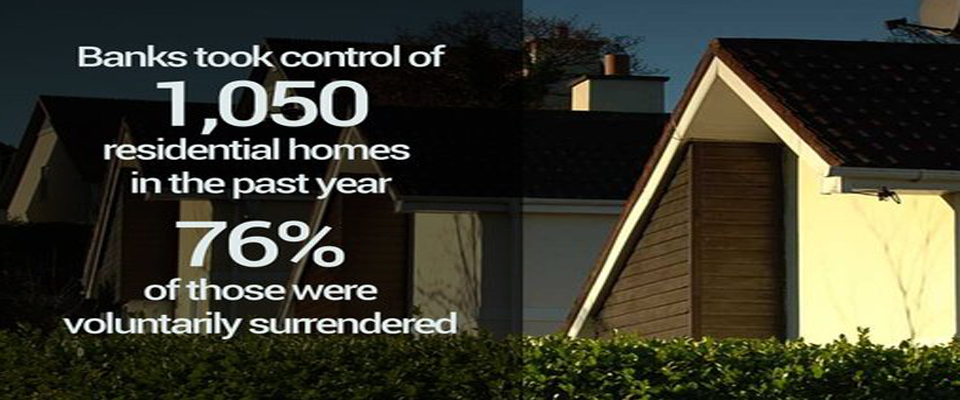Banks issued legal proceedings over to 2,514 homes in mortgage arrears in the three months to September, according to the Central Bank.
The latest Residential Mortgage Arrears and Repossessions Statistics show that banks took 302 properties into their possession during the three month period, the majority of which were voluntarily surrendered or abandoned by borrowers.
Almost 170 properties were disposed of by banks during the period, leaving 1,393 private dwellings in lenders' possession by the end of September.
This compares to 1,274 properties at the end of the previous quarter.
Meanwhile the Central Bank figures show a 6.4% fall in the number of residential mortgage accounts in arrears during the quarter, which stood at 117,889 by the end of September.
These accounts represent 15.5% of the country's total private mortgage stock.
The Central Bank says there was a decline in the number of mortgages in arrears for 90 days or more - down 6% in the quarter.
Those in arrears for 360 days or more was also lower, it said, however the number of very long-term arrears of 720 days or more was higher.
Residential mortgages in arrears for 720 days or more now represents almost 32% of all arrears cases in the country, and nearly three quarters of the repayment amount currently outstanding.
However the Central Bank also sites progress on mortgage restructuring deals, with 109,911 accounts classified as restructured by the end of September.
Almost 17% of these were not deemed to be meeting the terms of their restructuring arrangement, though, representing 18,465 accounts.
Of those deemed to be meeting the terms of their restructuring, more than a quarter were taking advantage of arrears capitalisation, where the value of the outstanding repayments is added back onto the mortgage.
The Central Bank says the level of accounts that have 're-defaulted' is particularly high in this category, however, with the figures suggesting that 32% of such deals have not been successful.
Over 15% of deals entailed an extension to the loan's term, while just below 15% saw the mortgage split, with repayments on some of the outstanding amount set aside to be repaid at a later date.
Almost 4% of deals involved a temporary interest rate reduction, 12.2% involved a reduced repayment rate that remained above interest-only, while a further 3.1% saw payments reduced to below interest-only.
Payment reductions to below interest-only also suffered from a high 're-default' rate, with 31.9% of cases failing to meet the agreed terms.
Permanent Interest Rate Reductions also saw a high rate of failure, with almost 43% of cases agreed suffering from 're-default' by the end of September.
Dermot O'Leary from Goodbody described the figures as a "mixed bag", saying the fall in arrears is welcome but questions remain about the appropriateness of the restructuring solutions being agreed with borrowers.







